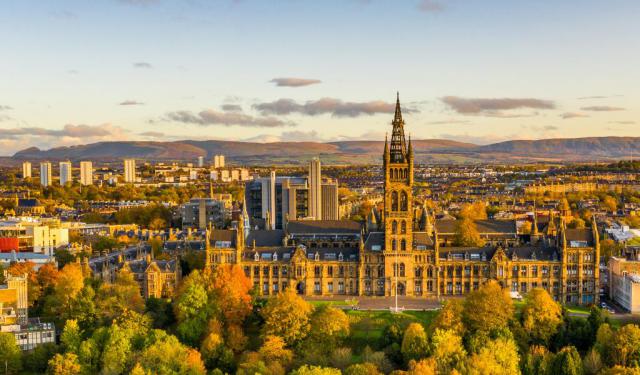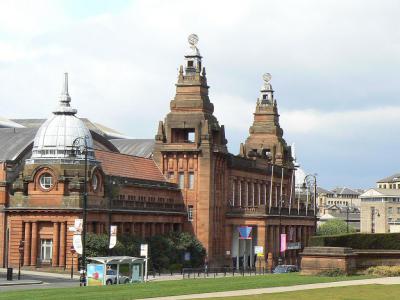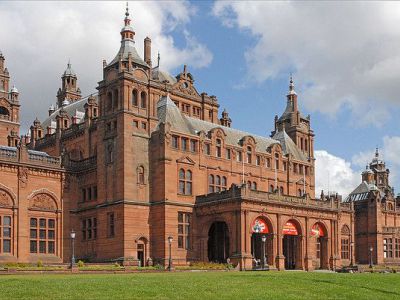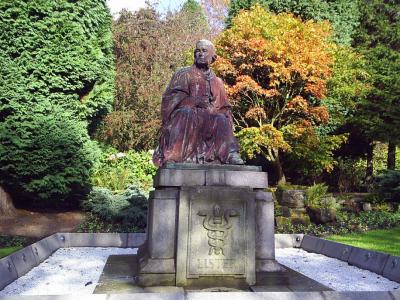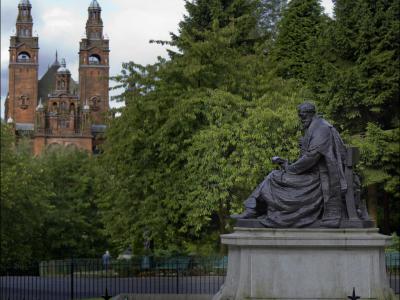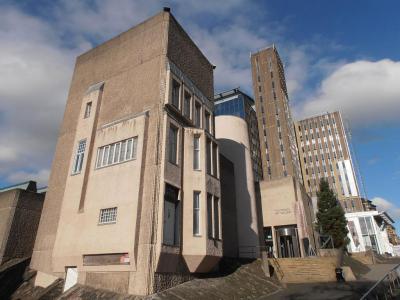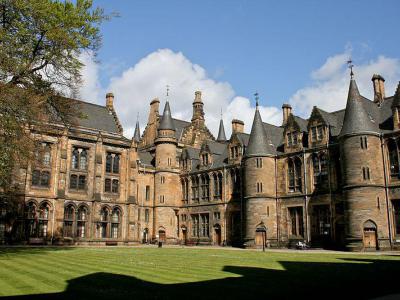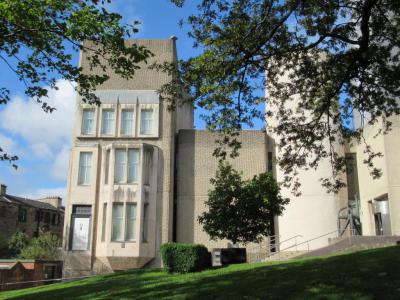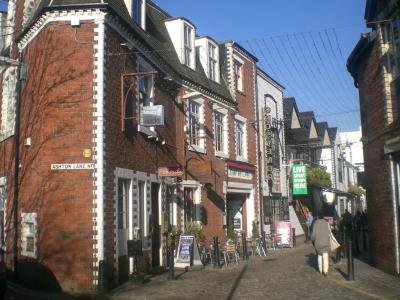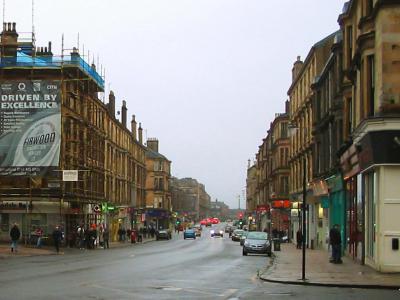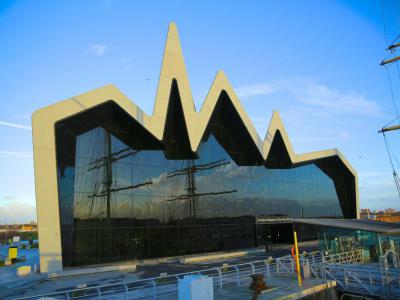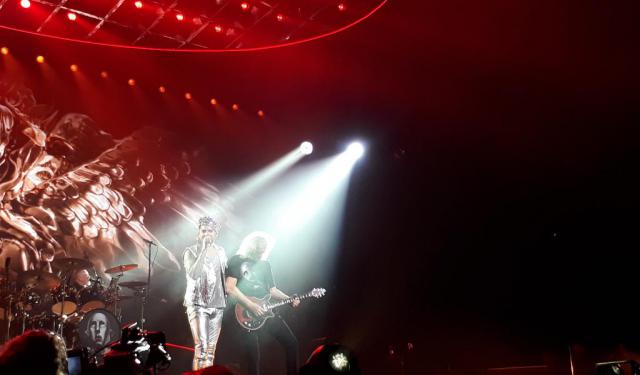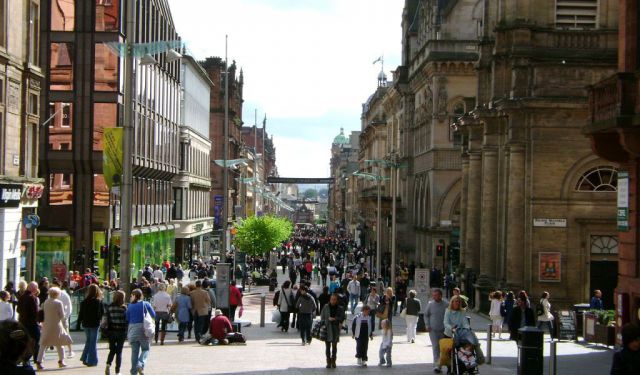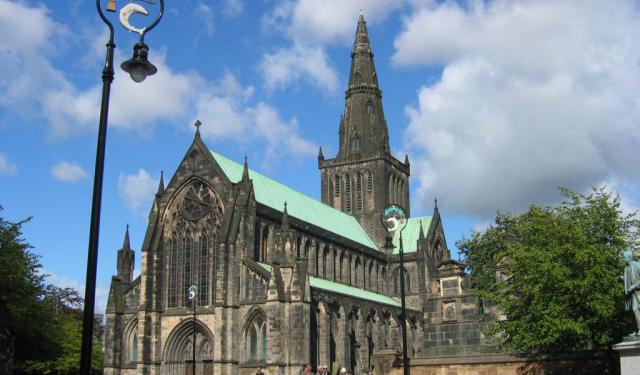Glasgow West End Walking Tour (Self Guided), Glasgow
Glasgow is a home to a great number of historic, cultural and architectural landmarks, the lion's share of which are found in the West End. The adjectives applicable to this part of Glasgow speak volumes: cosmopolitan, multi-cultured, bohemian, intellectual, grand, leafy, confident, tolerant, and trendy. Indeed all of them are true, especially given that inside the area there are several smaller neighborhoods, each with its own distinctive character.
Byres Road, the West End's main artery, has varied attractions centered around it: impressive Victorian architecture, quaint shops, bustling nightlife, public parks & gardens, and more. Complete with its upmarket residences, this district appeals to the young and mature professionals as well as Glasgow University students.
Situated behind the lively Byres Road is Ashton Lane, a cobbled backstreet with most of its premises occupied by various pubs and restaurants, plus a gallery of small specialist stores – popular with those coming to shop, dine and meet friends.
Other notable attractions within the West End include:
Kelvin Hall – one of the largest exhibition centers in Britain, opened in 1927; now a mixed-use arts and sports venue.
Kelvingrove Art Gallery – one of the most visited free-to-enter museums in the UK; among the exhibits is "Christ of Saint John of the Cross" by Salvador Dalí.
Hunterian Museum & Art Gallery – Scotland's oldest public museum, founded in 1807.
University of Glasgow – the 4th oldest university in the English-speaking world; established in 1451.
Riverside Transport Museum – zig-zagging, zinc-clad ultra-modern edifice housing impressive collections of motorcycles, cars, trains, ships, toys and other pieces of transport technology.
If you are intrigued by this highlight and feel the urge to experience first hand the flavors of Glaswegian West End, grab the opportunity and take this self-guided walk!
Byres Road, the West End's main artery, has varied attractions centered around it: impressive Victorian architecture, quaint shops, bustling nightlife, public parks & gardens, and more. Complete with its upmarket residences, this district appeals to the young and mature professionals as well as Glasgow University students.
Situated behind the lively Byres Road is Ashton Lane, a cobbled backstreet with most of its premises occupied by various pubs and restaurants, plus a gallery of small specialist stores – popular with those coming to shop, dine and meet friends.
Other notable attractions within the West End include:
Kelvin Hall – one of the largest exhibition centers in Britain, opened in 1927; now a mixed-use arts and sports venue.
Kelvingrove Art Gallery – one of the most visited free-to-enter museums in the UK; among the exhibits is "Christ of Saint John of the Cross" by Salvador Dalí.
Hunterian Museum & Art Gallery – Scotland's oldest public museum, founded in 1807.
University of Glasgow – the 4th oldest university in the English-speaking world; established in 1451.
Riverside Transport Museum – zig-zagging, zinc-clad ultra-modern edifice housing impressive collections of motorcycles, cars, trains, ships, toys and other pieces of transport technology.
If you are intrigued by this highlight and feel the urge to experience first hand the flavors of Glaswegian West End, grab the opportunity and take this self-guided walk!
How it works: Download the app "GPSmyCity: Walks in 1K+ Cities" from Apple App Store or Google Play Store to your mobile phone or tablet. The app turns your mobile device into a personal tour guide and its built-in GPS navigation functions guide you from one tour stop to next. The app works offline, so no data plan is needed when traveling abroad.
Glasgow West End Walking Tour Map
Guide Name: Glasgow West End Walking Tour
Guide Location: Scotland » Glasgow (See other walking tours in Glasgow)
Guide Type: Self-guided Walking Tour (Sightseeing)
# of Attractions: 10
Tour Duration: 2 Hour(s)
Travel Distance: 3.4 Km or 2.1 Miles
Author: irenes
Sight(s) Featured in This Guide:
Guide Location: Scotland » Glasgow (See other walking tours in Glasgow)
Guide Type: Self-guided Walking Tour (Sightseeing)
# of Attractions: 10
Tour Duration: 2 Hour(s)
Travel Distance: 3.4 Km or 2.1 Miles
Author: irenes
Sight(s) Featured in This Guide:
- Kelvin Hall
- Kelvingrove Art Gallery & Museum
- Lord Lister Monument
- Lord Kelvin Statue
- Hunterian Museum & Art Gallery
- University of Glasgow
- Mackintosh House
- Ashton Lane
- Byres Road
- Riverside Museum (The Glasgow Museum of Transport)
1) Kelvin Hall
The Kelvin Hall, situated on Argyle Street in Glasgow, is one of Britain's largest exhibition centers. It has transformed into a versatile venue for both arts and sports, initially opening its doors as an exhibition venue back in 1927. Over the years, it has also served as a concert hall, housed the Kelvin Hall International Sports Arena until 2014, and was the location of Glasgow's Museum of Transport from 1987 to 2010.
This impressive structure stands by the banks of the River Kelvin, directly across from the Kelvingrove Art Gallery and Museum. It was designed to complement the aesthetic of Kelvingrove Park and boasts a grand entrance plaza, constructed using red sandstone. The massive steel-framed building has been a fixture of the landscape since 1927.
Before the current Kelvin Hall, there was an earlier version built on former football fields at Bunhouse Grounds. It was a temporary structure made of brick, wood, and iron, opening in August 1918 to host the second British Industries Fair. The new Kelvin Hall was designed by architect Robert James Walker, known for his work on the 1911 Scottish Exhibition in Kelvingrove Park.
From 1918 to 1925, the Hall hosted numerous events like fairs, exhibitions, and carnivals, contributing proceeds to the Common Good fund. In 1926-1927, the current Kelvin Hall, spanning 6 acres, was built for large-scale exhibitions, commissioned by Glasgow Corporation and designed by Thomas Somers, Glasgow's Master of Work and City Engineer.
Today, the redeveloped Kelvin Hall serves as a hub for artistic, cultural, and health and fitness activities, made possible through a collaborative effort involving Glasgow City Council, Glasgow Life, the University of Glasgow, and the National Library of Scotland. This historic building holds category B listed status, reflecting its cultural significance and importance.
This impressive structure stands by the banks of the River Kelvin, directly across from the Kelvingrove Art Gallery and Museum. It was designed to complement the aesthetic of Kelvingrove Park and boasts a grand entrance plaza, constructed using red sandstone. The massive steel-framed building has been a fixture of the landscape since 1927.
Before the current Kelvin Hall, there was an earlier version built on former football fields at Bunhouse Grounds. It was a temporary structure made of brick, wood, and iron, opening in August 1918 to host the second British Industries Fair. The new Kelvin Hall was designed by architect Robert James Walker, known for his work on the 1911 Scottish Exhibition in Kelvingrove Park.
From 1918 to 1925, the Hall hosted numerous events like fairs, exhibitions, and carnivals, contributing proceeds to the Common Good fund. In 1926-1927, the current Kelvin Hall, spanning 6 acres, was built for large-scale exhibitions, commissioned by Glasgow Corporation and designed by Thomas Somers, Glasgow's Master of Work and City Engineer.
Today, the redeveloped Kelvin Hall serves as a hub for artistic, cultural, and health and fitness activities, made possible through a collaborative effort involving Glasgow City Council, Glasgow Life, the University of Glasgow, and the National Library of Scotland. This historic building holds category B listed status, reflecting its cultural significance and importance.
2) Kelvingrove Art Gallery & Museum (must see)
The Kelvingrove Art Gallery & Museum is one of Glasgow’s most beloved landmarks and a highlight for any visitor to Scotland’s largest city. Opened in 1901 and housed in a grand red sandstone building overlooking the River Kelvin, the museum combines architectural splendor with a vast collection that spans centuries of art, history, and natural science. Its distinctive Spanish Baroque style, complete with dramatic spires and ornate detailing, makes the building itself as captivating as the treasures within. Surrounded by the green expanse of Kelvingrove Park, it offers a serene setting that contrasts beautifully with the lively urban energy of the West End.
Inside, the museum’s galleries hold more than 8,000 objects, arranged in a way that is both accessible and engaging. Art enthusiasts can admire works by European masters such as Rembrandt, Van Gogh, and Salvador Dalí-whose haunting Christ of Saint John of the Cross is one of the highlights. The collection also celebrates Scottish talent, featuring pieces by Charles Rennie Mackintosh and the Glasgow Boys, whose innovations helped define the city’s artistic identity at the turn of the 20th century.
The museum goes beyond art to explore natural history and world cultures. Visitors can stand beneath a soaring Spitfire plane suspended from the ceiling, marvel at a life-sized dinosaur skeleton, or come face-to-face with Sir Roger the Elephant, a much-loved exhibit that has delighted generations. Interactive displays ensure that families with children are as engaged as art connoisseurs, making it a museum for everyone.
With free admission, a beautiful riverside setting, and a diverse collection that blends fine art, design, and history, the Kelvingrove Art Gallery & Museum is both an educational and inspiring stop on any Glasgow itinerary.
Inside, the museum’s galleries hold more than 8,000 objects, arranged in a way that is both accessible and engaging. Art enthusiasts can admire works by European masters such as Rembrandt, Van Gogh, and Salvador Dalí-whose haunting Christ of Saint John of the Cross is one of the highlights. The collection also celebrates Scottish talent, featuring pieces by Charles Rennie Mackintosh and the Glasgow Boys, whose innovations helped define the city’s artistic identity at the turn of the 20th century.
The museum goes beyond art to explore natural history and world cultures. Visitors can stand beneath a soaring Spitfire plane suspended from the ceiling, marvel at a life-sized dinosaur skeleton, or come face-to-face with Sir Roger the Elephant, a much-loved exhibit that has delighted generations. Interactive displays ensure that families with children are as engaged as art connoisseurs, making it a museum for everyone.
With free admission, a beautiful riverside setting, and a diverse collection that blends fine art, design, and history, the Kelvingrove Art Gallery & Museum is both an educational and inspiring stop on any Glasgow itinerary.
3) Lord Lister Monument
The Lord Lister Monument is a tribute to one of the city’s most influential figures in the field of medicine, Joseph Lister. Often hailed as the “father of modern surgery,” Lister revolutionized surgical practice in the 19th century by introducing antiseptic methods, drastically reducing infection and mortality rates in hospitals. His pioneering use of carbolic acid to sterilize instruments and clean wounds set new standards for medical practice worldwide. Glasgow, where Lister carried out much of his groundbreaking research at the University of Glasgow, honours him with this striking monument.
Erected in 1924, the monument stands proudly in Kelvingrove Park, not far from the university where Lister once taught. Designed by sculptor George Henry Paulin, it presents a dignified bronze statue of Lister in academic robes, reflecting both his role as a scientist and a teacher. The figure is elevated on a stone plinth inscribed with his name, ensuring that passersby can recognize and reflect on his contributions to global health. Its location amid the park’s green landscape offers a peaceful setting, making it a spot of quiet admiration rather than a bustling tourist hub.
For visitors, the monument offers more than just a glimpse into Glasgow’s architectural heritage-it also highlights the city’s role in advancing medical science. Standing before the statue, one is reminded of how innovations born in Glasgow influenced hospitals across the world, saving countless lives. Combined with the surrounding beauty of Kelvingrove Park, the Lord Lister Monument makes for a meaningful stop on any cultural or historical exploration of the city.
Erected in 1924, the monument stands proudly in Kelvingrove Park, not far from the university where Lister once taught. Designed by sculptor George Henry Paulin, it presents a dignified bronze statue of Lister in academic robes, reflecting both his role as a scientist and a teacher. The figure is elevated on a stone plinth inscribed with his name, ensuring that passersby can recognize and reflect on his contributions to global health. Its location amid the park’s green landscape offers a peaceful setting, making it a spot of quiet admiration rather than a bustling tourist hub.
For visitors, the monument offers more than just a glimpse into Glasgow’s architectural heritage-it also highlights the city’s role in advancing medical science. Standing before the statue, one is reminded of how innovations born in Glasgow influenced hospitals across the world, saving countless lives. Combined with the surrounding beauty of Kelvingrove Park, the Lord Lister Monument makes for a meaningful stop on any cultural or historical exploration of the city.
4) Lord Kelvin Statue
The Lord Kelvin Statue is a tribute to one of the city’s most celebrated scientific minds, William Thomson, better known as Lord Kelvin. Born in Belfast in 1824 but raised and educated in Glasgow, Kelvin became a pioneering physicist, engineer, and mathematician. His name is forever associated with the Kelvin scale of absolute temperature, but his influence extended far beyond that. From advances in thermodynamics to his role in laying the first successful transatlantic telegraph cable, Kelvin was instrumental in shaping modern science and technology. Glasgow, where he spent much of his life teaching at the University, honors his legacy with this distinguished monument.
Unveiled in 1913, the statue was sculpted by Archibald Macfarlane Shannan and stands prominently in Kelvingrove Park, near the university that shaped much of Kelvin’s career. The figure depicts Lord Kelvin seated, dressed in academic robes, holding a globe to symbolize his wide-ranging contributions to global science and communication. The statue’s elevated position, overlooking the park, gives it both a sense of dignity and approachability, reflecting Kelvin’s role as both a groundbreaking thinker and a beloved teacher.
Visitors will find the statue surrounded by the greenery of Kelvingrove Park, making it not only a place to reflect on Kelvin’s achievements but also a pleasant stop on a stroll through the West End. Nearby, the University of Glasgow houses the Hunterian Museum and collections that further illuminate Kelvin’s work. Taken together, the statue and its setting make for a fitting reminder of Glasgow’s important place in scientific history.
Unveiled in 1913, the statue was sculpted by Archibald Macfarlane Shannan and stands prominently in Kelvingrove Park, near the university that shaped much of Kelvin’s career. The figure depicts Lord Kelvin seated, dressed in academic robes, holding a globe to symbolize his wide-ranging contributions to global science and communication. The statue’s elevated position, overlooking the park, gives it both a sense of dignity and approachability, reflecting Kelvin’s role as both a groundbreaking thinker and a beloved teacher.
Visitors will find the statue surrounded by the greenery of Kelvingrove Park, making it not only a place to reflect on Kelvin’s achievements but also a pleasant stop on a stroll through the West End. Nearby, the University of Glasgow houses the Hunterian Museum and collections that further illuminate Kelvin’s work. Taken together, the statue and its setting make for a fitting reminder of Glasgow’s important place in scientific history.
5) Hunterian Museum & Art Gallery
The Hunterian Museum & Art Gallery, nestled within the University of Glasgow’s historic campus, is Scotland’s oldest public museum and one of the city’s cultural gems. Founded in 1807 with the bequest of Dr. William Hunter, an 18th-century anatomist and avid collector, it remains a treasure trove of art, archaeology, and scientific discovery. Its collections range from ancient Roman artefacts to dazzling works of art, creating a space where visitors can trace humanity’s enduring curiosity about the world and our place in it.
The museum’s displays cover an impressive range of disciplines. Archaeology enthusiasts will find a remarkable collection of Roman artefacts from the Antonine Wall, a UNESCO World Heritage Site that once marked the northern frontier of the Roman Empire. Natural history galleries showcase fossils, minerals, and zoological specimens, while the anatomy section reflects Hunter’s pioneering medical research. Equally captivating is the Hunterian Art Gallery, home to masterpieces by Rembrandt, Whistler, and the Glasgow Boys, as well as the world’s largest collection of works by Charles Rennie Mackintosh, the celebrated Scottish architect and designer.
Beyond its collections, the Hunterian offers a distinctive atmosphere shaped by the university’s neo-Gothic buildings and leafy courtyards. The Mackintosh House, a meticulous reassembly of the artist’s former home, provides an intimate look into his life and creative vision. Visitors can explore reconstructions of historic interiors or step into galleries that juxtapose classical antiquities with modern works, reflecting the museum’s broad scope.
A visit to the Hunterian Museum & Art Gallery is both a cultural journey and an opportunity to experience the intellectual heart of Glasgow. Focused on ancient history, fine art, or scientific innovation, visitors will find in the museum a rich and thought-provoking perspective on how knowledge and creativity have shaped Scotland and the wider world.
The museum’s displays cover an impressive range of disciplines. Archaeology enthusiasts will find a remarkable collection of Roman artefacts from the Antonine Wall, a UNESCO World Heritage Site that once marked the northern frontier of the Roman Empire. Natural history galleries showcase fossils, minerals, and zoological specimens, while the anatomy section reflects Hunter’s pioneering medical research. Equally captivating is the Hunterian Art Gallery, home to masterpieces by Rembrandt, Whistler, and the Glasgow Boys, as well as the world’s largest collection of works by Charles Rennie Mackintosh, the celebrated Scottish architect and designer.
Beyond its collections, the Hunterian offers a distinctive atmosphere shaped by the university’s neo-Gothic buildings and leafy courtyards. The Mackintosh House, a meticulous reassembly of the artist’s former home, provides an intimate look into his life and creative vision. Visitors can explore reconstructions of historic interiors or step into galleries that juxtapose classical antiquities with modern works, reflecting the museum’s broad scope.
A visit to the Hunterian Museum & Art Gallery is both a cultural journey and an opportunity to experience the intellectual heart of Glasgow. Focused on ancient history, fine art, or scientific innovation, visitors will find in the museum a rich and thought-provoking perspective on how knowledge and creativity have shaped Scotland and the wider world.
6) University of Glasgow (must see)
The United Kingdom is home to several prestigious and ancient universities that enjoy global renown. Among these institutions, the University of Glasgow holds a significant position as the fourth oldest in English-speaking countries.
Its establishment can be traced back to 1451 when it received formal recognition through a Papal Bull issued during the papacy of Pope Nicholas V. Subsequently, King James II granted permission to Bishop William Turnbill to integrate the university with the city's cathedral. However, during the Reformation period, both the Mace and the Bull were transported to France. While the Mace eventually found its way back, the fate of the Bull remains uncertain, possibly lost or stolen.
In 1870, Sir George Scott oversaw the construction of the university's main campus on Gilmorehill, adopting a Gothic architectural style and featuring a twin-quadrangle design with an open undercroft. A spire was later added to the bell tower in 1887. The university's various departments are dispersed across different buildings within the city and across the country.
During the 18th century, the University of Glasgow played a central role in the Scottish Enlightenment movement, while in the 19th century, it broadened its admissions, welcoming students beyond the privileged upper classes. Children of merchants enrolled to pursue studies in fields such as law, medicine, education, engineering, science, and theology.
Within the campus, visitors can explore the impressive Hunterian Museum & Gallery, as well as the Mackintosh House, offering enriching cultural experiences.
Its establishment can be traced back to 1451 when it received formal recognition through a Papal Bull issued during the papacy of Pope Nicholas V. Subsequently, King James II granted permission to Bishop William Turnbill to integrate the university with the city's cathedral. However, during the Reformation period, both the Mace and the Bull were transported to France. While the Mace eventually found its way back, the fate of the Bull remains uncertain, possibly lost or stolen.
In 1870, Sir George Scott oversaw the construction of the university's main campus on Gilmorehill, adopting a Gothic architectural style and featuring a twin-quadrangle design with an open undercroft. A spire was later added to the bell tower in 1887. The university's various departments are dispersed across different buildings within the city and across the country.
During the 18th century, the University of Glasgow played a central role in the Scottish Enlightenment movement, while in the 19th century, it broadened its admissions, welcoming students beyond the privileged upper classes. Children of merchants enrolled to pursue studies in fields such as law, medicine, education, engineering, science, and theology.
Within the campus, visitors can explore the impressive Hunterian Museum & Gallery, as well as the Mackintosh House, offering enriching cultural experiences.
7) Mackintosh House
The Mackintosh House is a meticulous re-creation of the former home of renowned architect and designer Charles Rennie Mackintosh and his wife, the artist Margaret Macdonald Mackintosh. Originally located on Southpark Avenue, the couple’s house was demolished in the 1960s due to university expansion. However, the interiors-ranging from the furniture to the wall paneling-were carefully preserved and reconstructed within the Hunterian Art Gallery at the University of Glasgow. Today, visitors can explore this unique space and step directly into the world of one of Scotland’s most influential creative partnerships.
The house reflects Mackintosh’s distinctive style, which blended Scottish tradition with Art Nouveau influences and Japanese aesthetics. The white-walled rooms, custom-designed furniture, and decorative panels by Margaret Macdonald create an atmosphere that is both simple and richly symbolic. From the light-filled drawing room to the more intimate bedroom and dining areas, each space demonstrates how Mackintosh’s architectural vision extended seamlessly into everyday living.
Beyond its role as a house museum, the Mackintosh House is also an intimate portrait of the couple’s artistic collaboration. Margaret’s gesso panels and decorative works complement Mackintosh’s bold geometric designs, making the home a dialogue between two creative minds. Visitors are able to see not just a preserved interior, but a complete work of art where architecture, design, and decoration are inseparable.
For those exploring Glasgow’s strong ties to Mackintosh, the house offers one of the most personal encounters. It allows a glimpse into how the architect lived and worked, making it an essential stop for anyone interested in design, history, or the lasting legacy of the Glasgow Style.
The house reflects Mackintosh’s distinctive style, which blended Scottish tradition with Art Nouveau influences and Japanese aesthetics. The white-walled rooms, custom-designed furniture, and decorative panels by Margaret Macdonald create an atmosphere that is both simple and richly symbolic. From the light-filled drawing room to the more intimate bedroom and dining areas, each space demonstrates how Mackintosh’s architectural vision extended seamlessly into everyday living.
Beyond its role as a house museum, the Mackintosh House is also an intimate portrait of the couple’s artistic collaboration. Margaret’s gesso panels and decorative works complement Mackintosh’s bold geometric designs, making the home a dialogue between two creative minds. Visitors are able to see not just a preserved interior, but a complete work of art where architecture, design, and decoration are inseparable.
For those exploring Glasgow’s strong ties to Mackintosh, the house offers one of the most personal encounters. It allows a glimpse into how the architect lived and worked, making it an essential stop for anyone interested in design, history, or the lasting legacy of the Glasgow Style.
8) Ashton Lane
Tucked away just off Byres Road in Glasgow’s lively West End, Ashton Lane is a cobbled backstreet that feels like it belongs to another era. By day, the lane’s string of ivy-covered brick buildings and fairy-light-strewn facades make it a picturesque escape from the bustle of the city. By night, it transforms into one of Glasgow’s most atmospheric gathering spots, drawing students, locals, and visitors alike with its warm glow and convivial spirit. Though it may be small in size, Ashton Lane has earned a big reputation as one of the city’s most distinctive and charming destinations.
The street’s character is rooted in its past. Once a run of mews buildings and stables behind grand Victorian townhouses, Ashton Lane began to flourish in the 1970s when artists and entrepreneurs started opening cafés and bars in the disused spaces. Over time, it grew into a hub for alternative culture, offering an inviting contrast to the more polished main streets of the West End. The cobblestones that remain underfoot are a reminder of its older, humbler origins.
Today, Ashton Lane is best known for its eclectic mix of venues. The much-loved Ubiquitous Chip has been serving Scottish cuisine here since the early 1970s, becoming something of a local institution. Independent bars and pubs spill out onto the lane, filling the air with music and conversation, while the Grosvenor Cinema-one of the oldest cinemas in Scotland-adds a touch of nostalgia and entertainment.
A visit to Ashton Lane is less about ticking off a landmark and more about soaking in the atmosphere of Glasgow’s West End. With its glowing fairy lights overhead, laughter spilling from traditional pubs, and the scent of hearty Scottish dishes drifting from open doorways, the lane captures the city’s sociable, creative energy. It is an ideal spot to linger, toast the night, and experience the unique rhythm of Glasgow life.
The street’s character is rooted in its past. Once a run of mews buildings and stables behind grand Victorian townhouses, Ashton Lane began to flourish in the 1970s when artists and entrepreneurs started opening cafés and bars in the disused spaces. Over time, it grew into a hub for alternative culture, offering an inviting contrast to the more polished main streets of the West End. The cobblestones that remain underfoot are a reminder of its older, humbler origins.
Today, Ashton Lane is best known for its eclectic mix of venues. The much-loved Ubiquitous Chip has been serving Scottish cuisine here since the early 1970s, becoming something of a local institution. Independent bars and pubs spill out onto the lane, filling the air with music and conversation, while the Grosvenor Cinema-one of the oldest cinemas in Scotland-adds a touch of nostalgia and entertainment.
A visit to Ashton Lane is less about ticking off a landmark and more about soaking in the atmosphere of Glasgow’s West End. With its glowing fairy lights overhead, laughter spilling from traditional pubs, and the scent of hearty Scottish dishes drifting from open doorways, the lane captures the city’s sociable, creative energy. It is an ideal spot to linger, toast the night, and experience the unique rhythm of Glasgow life.
9) Byres Road (must see)
Byres Road, located in the Hillhead area of Glasgow, serves as a vital thoroughfare in the city's West End. This street encompasses a diverse blend of commercial enterprises, shopping outlets, and high-end residential properties, primarily characterized by traditional sandstone tenements. These buildings typically feature retail spaces on their ground floors and three stories of residential apartments above. Notably, its proximity to the University of Glasgow has resulted in a significant student population in the surrounding West End of Glasgow.
Prominent Glasgow artist Alasdair Gray has embellished several establishments along Byres Road with his murals, including the Ubiquitous Chip, the Oxfam Bookshop, and the Oran Mor bars.
Stretching from the Botanic Gardens, adjacent to Great Western Road in the north, to Partick Cross at Dumbarton Road in the south, the road initially traversed a relatively rural region known as the Byres of Partick, also referred to as Bishop's Byres. One of the area's oldest pubs is Curler's, dating back to the 17th century. Legend has it that King Charles II granted this establishment a seven-day license, and it was originally situated beside a pond used for the sport of curling.
The neighboring lanes and byways have thrived thanks to the commerce generated by Byres Road, now hosting a diverse range of small businesses, from tapas bars to second-hand record stores. Among these, Ashton Lane stands out as the most renowned, featuring bars, restaurants, and even a cinema.
Prominent Glasgow artist Alasdair Gray has embellished several establishments along Byres Road with his murals, including the Ubiquitous Chip, the Oxfam Bookshop, and the Oran Mor bars.
Stretching from the Botanic Gardens, adjacent to Great Western Road in the north, to Partick Cross at Dumbarton Road in the south, the road initially traversed a relatively rural region known as the Byres of Partick, also referred to as Bishop's Byres. One of the area's oldest pubs is Curler's, dating back to the 17th century. Legend has it that King Charles II granted this establishment a seven-day license, and it was originally situated beside a pond used for the sport of curling.
The neighboring lanes and byways have thrived thanks to the commerce generated by Byres Road, now hosting a diverse range of small businesses, from tapas bars to second-hand record stores. Among these, Ashton Lane stands out as the most renowned, featuring bars, restaurants, and even a cinema.
10) Riverside Museum (The Glasgow Museum of Transport) (must see)
The Riverside Museum is one of Glasgow’s most popular attractions, bringing the city’s industrial and maritime heritage vividly to life. Opened in 2011, the museum is housed in a striking riverside building designed by the late architect Zaha Hadid, whose wave-like structure reflects the fluidity of the River Clyde beside it. The museum replaced the former Transport Museum at Kelvin Hall, creating a modern home for Glasgow’s extensive collection of vehicles, locomotives, and ships that chart the city’s pivotal role in engineering and global trade.
Inside, the museum offers a rich journey through time, with exhibits covering everything from vintage cars and bicycles to massive steam locomotives and trams. One of its most distinctive features is the recreated “Cobbled Street,” where visitors can walk through a life-sized Glasgow street scene from the early 20th century, complete with period shops and signage. Alongside these immersive displays, the collection showcases Glasgow’s history as a hub of shipbuilding, with models and stories highlighting its once-thriving docks and shipyards.
The museum’s interactive displays make it particularly engaging for families, offering touchscreens, hands-on exhibits, and even opportunities to climb aboard certain vehicles. Highlights include the dramatic wall of cars, an impressive vertical display of vintage automobiles, and the inclusion of rare and iconic vehicles such as early fire engines and classic motorcycles. The setting on the Clyde adds to the experience, with the Tall Ship Glenlee permanently moored outside, allowing visitors to step aboard a restored 19th-century sailing vessel.
Together, the Riverside Museum and the Glenlee create a dynamic destination where history, design, and storytelling meet. Interested in engineering, transport history, or simply exploring a visually striking space, visitors will find in the museum a compelling glimpse into Glasgow’s legacy as one of the world’s great industrial cities. It is a place where the past feels tangible, and the city’s innovative spirit continues to shine.
Inside, the museum offers a rich journey through time, with exhibits covering everything from vintage cars and bicycles to massive steam locomotives and trams. One of its most distinctive features is the recreated “Cobbled Street,” where visitors can walk through a life-sized Glasgow street scene from the early 20th century, complete with period shops and signage. Alongside these immersive displays, the collection showcases Glasgow’s history as a hub of shipbuilding, with models and stories highlighting its once-thriving docks and shipyards.
The museum’s interactive displays make it particularly engaging for families, offering touchscreens, hands-on exhibits, and even opportunities to climb aboard certain vehicles. Highlights include the dramatic wall of cars, an impressive vertical display of vintage automobiles, and the inclusion of rare and iconic vehicles such as early fire engines and classic motorcycles. The setting on the Clyde adds to the experience, with the Tall Ship Glenlee permanently moored outside, allowing visitors to step aboard a restored 19th-century sailing vessel.
Together, the Riverside Museum and the Glenlee create a dynamic destination where history, design, and storytelling meet. Interested in engineering, transport history, or simply exploring a visually striking space, visitors will find in the museum a compelling glimpse into Glasgow’s legacy as one of the world’s great industrial cities. It is a place where the past feels tangible, and the city’s innovative spirit continues to shine.
Walking Tours in Glasgow, Scotland
Create Your Own Walk in Glasgow
Creating your own self-guided walk in Glasgow is easy and fun. Choose the city attractions that you want to see and a walk route map will be created just for you. You can even set your hotel as the start point of the walk.
Glasgow Music Spots Walking Tour
For decades, Glasgow has been renowned as a stomping ground for both young and seasoned music bands. The variety of spots – from snug, unpretentious cubbyholes catering for small intimate gigs to huge arenas hosting the biggest names in business – are as an integral part of Glasgow's evolutionizing music scene as its musicians. And while Glaswegian accents have dominated international... view more
Tour Duration: 2 Hour(s)
Travel Distance: 3.5 Km or 2.2 Miles
Tour Duration: 2 Hour(s)
Travel Distance: 3.5 Km or 2.2 Miles
Glasgow Introduction Walking Tour
The largest city and seaport in Scotland, Glasgow is also one of the country's most popular tourist destinations. Famed for its 19th-century Victorian and Art Nouveau architecture, numerous musical events, football matches, traditional pubs, and food venues, this place is truly unique.
The area of Glasgow in Scotland's western Lowlands has been inhabited for millennia, with the River... view more
Tour Duration: 2 Hour(s)
Travel Distance: 3.8 Km or 2.4 Miles
The area of Glasgow in Scotland's western Lowlands has been inhabited for millennia, with the River... view more
Tour Duration: 2 Hour(s)
Travel Distance: 3.8 Km or 2.4 Miles
Historical Churches
The feeling of serenity and being free from stress and worries is quite precious these days. And where better to find this than inside a church? Glasgow is home to a number of great churches that are notable for their architectural design, mostly in the Gothic style.
One of the city's most iconic ecclesiastical landmarks and a stunning example of Gothic architecture is Saint Mungo's... view more
Tour Duration: 2 Hour(s)
Travel Distance: 4.1 Km or 2.5 Miles
One of the city's most iconic ecclesiastical landmarks and a stunning example of Gothic architecture is Saint Mungo's... view more
Tour Duration: 2 Hour(s)
Travel Distance: 4.1 Km or 2.5 Miles
The Most Popular Cities
/ view all
